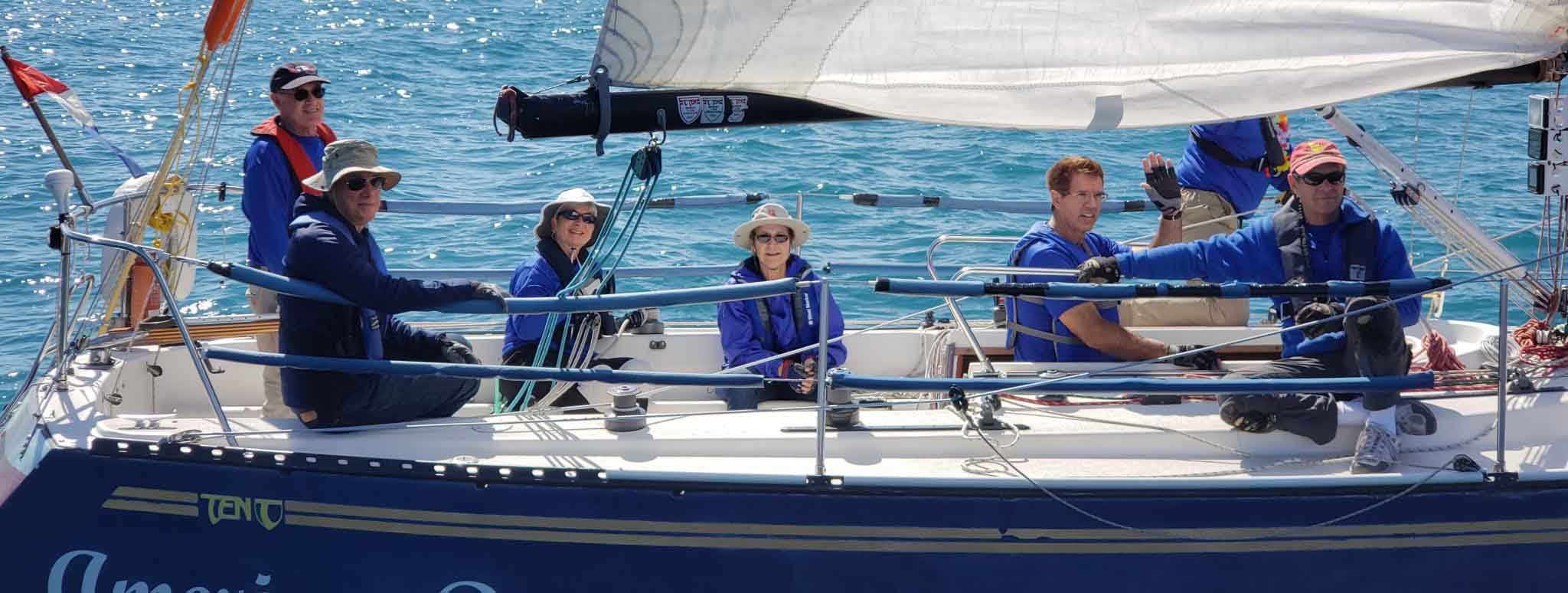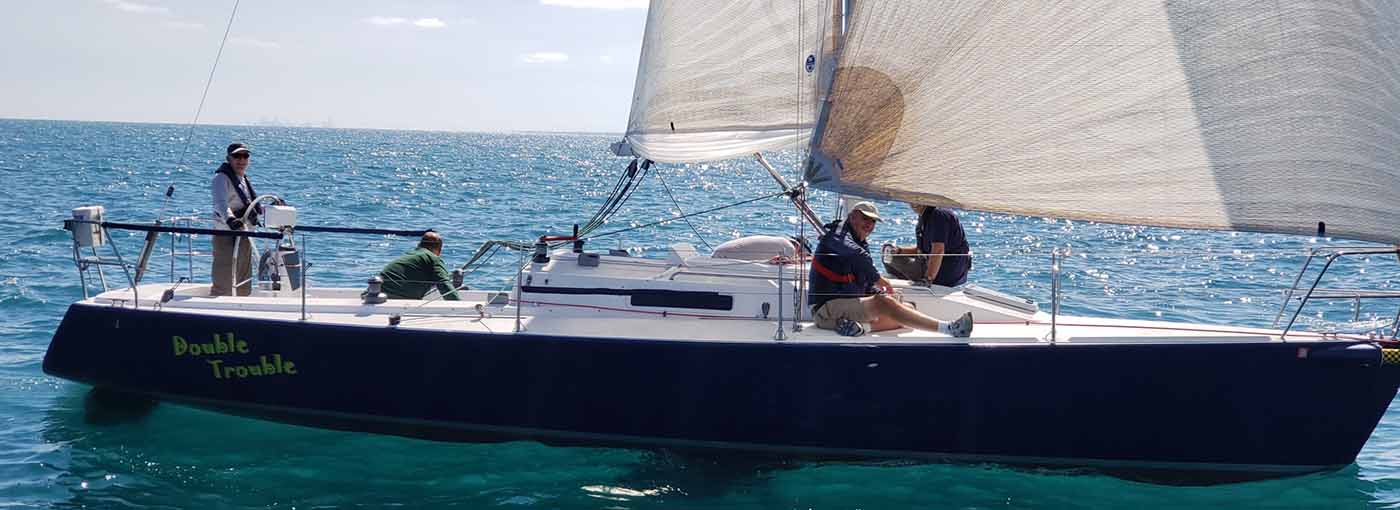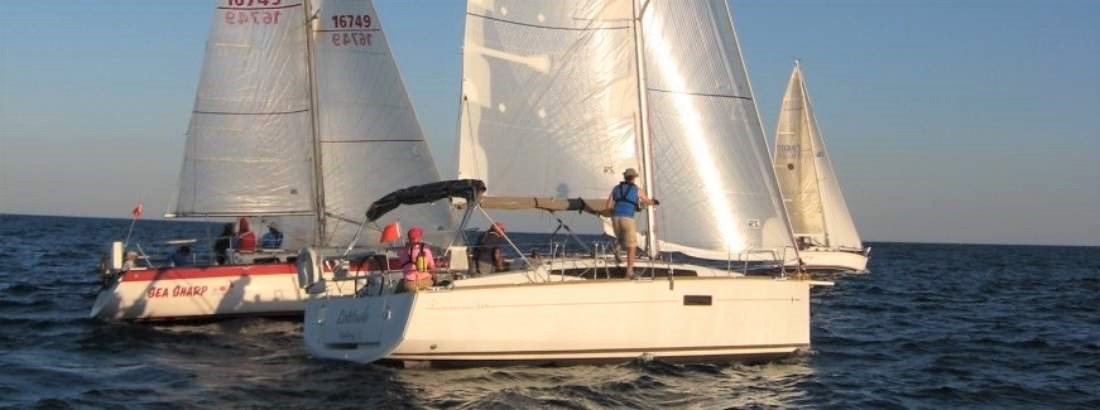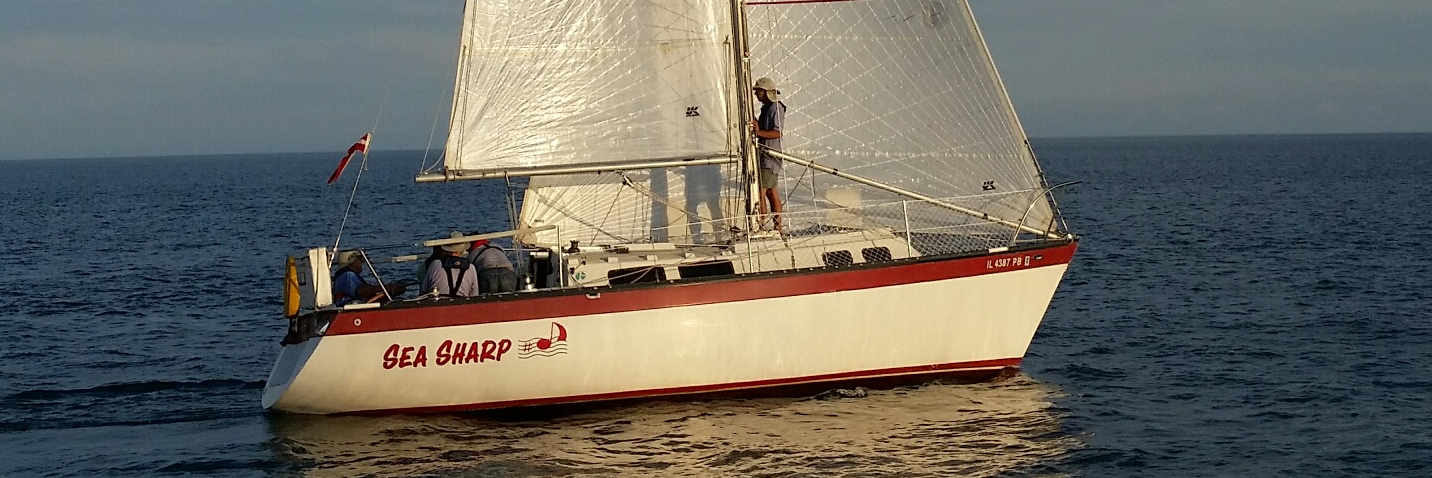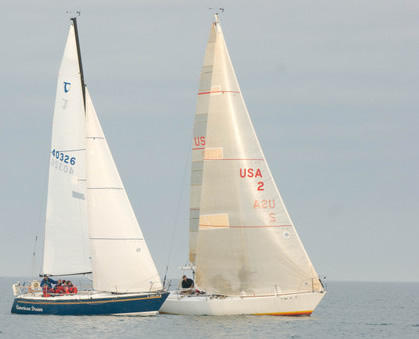"How They Did It" -- Winners' Tips
We asked the two overall 2009 winners, skippers Shel Wecker American Dream (Spinnaker), and Mike Smith of Accord (Jib and Main), for some insight into how they did it. Straight from them:
Michael Smith, Accord
I was asked to write a short note on what worked well for us in 2009, so here it is; take it with a grain of salt! On ‘Accord’ success was defined as sailing safe, having fun, and going fast; in precisely that order.
We sailed safe by avoiding risky situations, knowing our limitations, and talking through slow deliberate maneuvers. We had a great crew including Gayle & Jim Booth, Owen McCall, Dale McClelland, Mary Lambrecht, Allison Neumeister, and an occasional guest. A positive but loose attitude with absolutely no yelling set the tone. Our team enjoyed sailing together and always had fun! Since this year was extremely light, I’ll focus on the things that seemed worked for us in these conditions.
A clean bottom, minimizing weight, and rig set-up helped our light air speed. We avoided carrying unnecessary items that quickly add up to hundreds of pounds of dead weight. Cold beer and ice was the only exception to this mantra! The rig was set-up with generous rake, substantial pre-bend and moderately loose shroud tension.
Our primary objective at the start was clear air with speed going in the right direction, even at the expense of being slightly late at the gun. Up-wind, we chose one side of the course and stuck with it, avoiding the middle early and consolidating back in the second half of the beat to avoid the lay-lines. Down-wind we focused on staying in the breeze with less concern about the lifts or headers.
We were patient, tried to stick with our plan, and avoided reacting too quickly to wind shifts. Covering competition was less important on the first beat while ‘spending’ a lead with a lose cover was acceptable on the last run. Priority was speed through the water not pointing. We kept it simple by shifting gears with macro controls such as backstay and sheets, while avoiding too much focus on less important items such as halyard or out-hall. We kept our head out of the boat and mostly ignored the array of electronics on board other than boat speed. Last but certainly not least, we accepted any luck that would come our way with a cold beer in hand!
We are already looking forward to spring and another fun season with the Anchorage Yacht Club in 2010!
-Mike and the crew of ‘Accord’
Shel Wecker, American Dream
We did a few things this year that we think made a difference. Perhaps most importantly, the "Dream Team" (Con Lasaitis, Sue Lutz, Oscar Lutz, Blaze Bohlig, Steve Perich, and Harry Chandler) sailed a lot of races, which gave us more sailing time together, and importantly, more throwouts. The finishing order in our section was almost exactly the same as the number of races sailed.
With all the light air we had, rig tune and bottom condition were very important. Light air calls for a loose rig, so that increased headstay sag can power up your jib. We use a Loos gauge and calipers to repeatably set the turnbuckles to match wind conditions. Keeping the bottom clean was also a priority. One of our Mac crew members cleaned the bottom using scuba gear before the Mac, but otherwise we used a product called a "DriDiver", which is a ScotchBrite pad on a foam float, to keep the bottom clean all the way up to the keel. Then we used a square ScotchBrite pad on the end on a swivel joint, attached to a fully extended boat hook, to clean the keel and rudder. These devices let us keep the bottom clean without having to get in the water.
Last, we took advantage of opportunities to either crew on other T-10's or have skilled "guest" crew sail with us for a race or two, so that we could learn from them. We had a great time - and are looking forward to seeing you all at the Sailor's Anonymous presentations over the winter.



